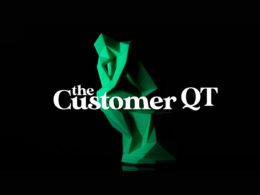Never in the history of marketing, besides wartime, has widespread, brand loyalty been put to the test by a changing market environment. Covid-19 is making some of our tried and true brands scarce. Meanwhile, second tier and generic brands are stepping up to meet our needs, often without complaint by consumers or sense of sacrifice. If leading brands are to remain salient, and of added value worth the extra shopping trip, then they must stay clearly prominent in our minds. Several key industries such as luxury good, fashion, travel, entertainment, and restaurants are being categorically challenged by the Pandemic and face an uncertain future. Moreover, major brands must reinforce their competitive advantages, and find ways to stay accessible without a long a hiatus from the shelves or e-commerce sites.
By Elissa Moses
As with all change there are new opportunities for emerging brands to gain a foothold. Moreover, leading brands face a real threat of being dethroned if they simply rest on their laurels and do not evolve to meet the new reality
In light of these massive marketing environment shift, Market Research methodologies are changing rapidly to accommodate COVID-19 limitations, and many will most likely become the new normal. 2020 was the year the tried and true focus group went on a ventilator. Facilities shut and even unemployed respondents did not want to sit in a conference room talking to strangers for a cash incentive. Pre-pandemic, in person focus groups and 1-on-1’s (individual interviews) represented 80% of the qualitative research market and now it is zero. Virtually all has shifted to online. Not only have focus group facilities closed, but so have neuro labs that require in-person measurement of eye-tracking, biometrics, and EEG response.
In its place, on-line and in-home research is surging and with it new, innovative techniques, especially those for getting at emotional response and predicting preference.
Here are four new methods in our sphere that warrant consideration.
-
Measuring Implicit Emotional Connections with EmOcean™
If marketing has learned anything in the last couple of years about neuroscience and how the brain functions, it is that emotions are the great brand drivers and differentiators. We know that advertising influences emotions and that brand share battles are won and lost on them, but how are they best measured?
EmOcean™ is the first implicit, mobile ready, methodology using a library of 2000+ emotionally validated photos which represent an array of 32 salient brand emotions ranging from “Disgusted” and “Frustrated” to “Compassionate” and “Admired.” If you want to reliably differentiate how people feel about Coke vs. Pepsi, Netflix vs. Hulu, Dell vs. Apple, Amazon vs. the store on main street or even Trump vs. Biden, this technique is for you. Developed by neuromarketer Matt Tullman and Dartmouth academic Dr. Kimberly Rose Clark, both of Merchant Mechanics/Bellwether Citizen Response, the methodology can be integrated as a module into surveys and develop rich insight into how consumers or voters feel about products, candidates, and issues without requiring neurometric equipment.
-
Using virtual currency and scarcity to mimic real eCommerce/mCommerce consumer experience.
FastFocus mirrors the mobile e-commerce experience to determine online sales lift tied to alternative offers in terms of pricing, images, packages, etc. using virtual dollars. Based on a behavioral decision-making process, the method combines data science and advanced analytics to enable brands to dial in which images and packaging designs are likely to effectively engage the consumer – leading to m-commerce wins over mobile.
It also solves the issue of assuring clear communication and classification along with meaningful diagnostics for the power of the idea (Idea Score), choice commitment (Passion Score) and universality of appeal (Controversiality Score). #FastFocus
-
Determining Media Content and Advertising Impact In-Home with StreamPulse™ from MediaScience
The consumer’s home is the ultimate laboratory, especially for media and advertising consumption, because as they say in the Broadway musical Hamilton, “It is the room where it happens.” MediaScience has devised a way using their OTT device to stream content as a passive or interactive experience. They can re-create a network, test ads and their environments multiple ways, measure the impact of product placement and measure the impact of content as it is watched naturally – – all while properly socially distancing.
The StreamPulse™ TV app allows research participants to take part in a study after the viewing experience is complete. The survey will appear either on their TV or their mobile device depending on preference. Moreover, it is easy to follow up with a qualitative 1-on-1 interview for more comprehensive understanding
-
Tech Enabled Online Qual with HARK Connect
The need to talk to our consumers and constituents will never go away. There is so much communication in the sound of their voices, speed of words, pitch, head tilt, facial expressions, body angles that is frankly best perceived human to human using our own senses. That is why Qualitative Research remains such a thriving segment, albeit, until recently, on the low end of upgrades from advances in technology.
HARK Connect™ entered the market only weeks before Covid-19 struck to enhance the qualitative research experience for researchers, marketers, and moderators. It offers a bundle of advanced features including streaming anywhere on any device, subtitles on screen so you do not miss anything, instant transcripts, easy clip extraction, custom tagging, chatting and search. Four weeks later all the group facilities began to close due to the Pandemic and HARK Connect pivoted to develop online, mobile viewing Qual without sacrificing any of the advanced new features.
These spotlighted new methods may have been fueled by Covid-19, but all are expected to become permanent improvements to the research and marketing landscape because of the added value that they offer.
The collective value is in in their abilities to validly identify emotional equity and competitive brand vulnerabilities (EmOcean™), understand advertising and media impact in a consumer’s sacred natural habitat – – the sacred living room or den, (StreamPulse™) assess preference for brands, packages or product concepts based on behavioral response (Fast Focus™) and discover deep insights while providing a superior Qual experience (HARK Connect™), all without the necessity for face-to-face interactions.
For more information, please contact [email protected]
 Elissa Moses is CEO of BrainGroup Global and partner in HARK Connect and Bellwether Citizen Response. She is a leader in developing scientific and tech enabled new methods for measuring human emotions, influencing consumer behavior, and strengthening brand strategy. Formerly she was the CEO of the Ipsos Global Neuro and Behavioral Science Center, Chief Analytics Officer at EmSense, Managing Partner at Grey Advertising and SVP, Head of Global Consumer Intelligence and Strategy at Philips. She was also the head of Planning at DMB&B and Founder/Managing Director of BrainWaves. Elissa is a frequent industry author, including a book on marketing to global youth, The $100 Billion Allowance, and a popular international speaker. She is a member of C200, a corporate advisor and seeks board opportunities. [email protected]
Elissa Moses is CEO of BrainGroup Global and partner in HARK Connect and Bellwether Citizen Response. She is a leader in developing scientific and tech enabled new methods for measuring human emotions, influencing consumer behavior, and strengthening brand strategy. Formerly she was the CEO of the Ipsos Global Neuro and Behavioral Science Center, Chief Analytics Officer at EmSense, Managing Partner at Grey Advertising and SVP, Head of Global Consumer Intelligence and Strategy at Philips. She was also the head of Planning at DMB&B and Founder/Managing Director of BrainWaves. Elissa is a frequent industry author, including a book on marketing to global youth, The $100 Billion Allowance, and a popular international speaker. She is a member of C200, a corporate advisor and seeks board opportunities. [email protected]
#CoronaMarketing #BrandLoyalty #CovidMarketingOpportunities #NewMarketResearchMethods #IAT #ImplicitMethods #Emotion #ecommerce #mCommerce #CovidAdvertising #CovidMarketingPredictions #BrainGroupGlobal #MediaScience #BellwetherCitizenResponse #FastFocus #HARKConnect #StreamPulse #EmOcean #MerchantMechanics #Glynwood #Netflix #Onlinefocusgroups #luxurygoods #brandscarcity












